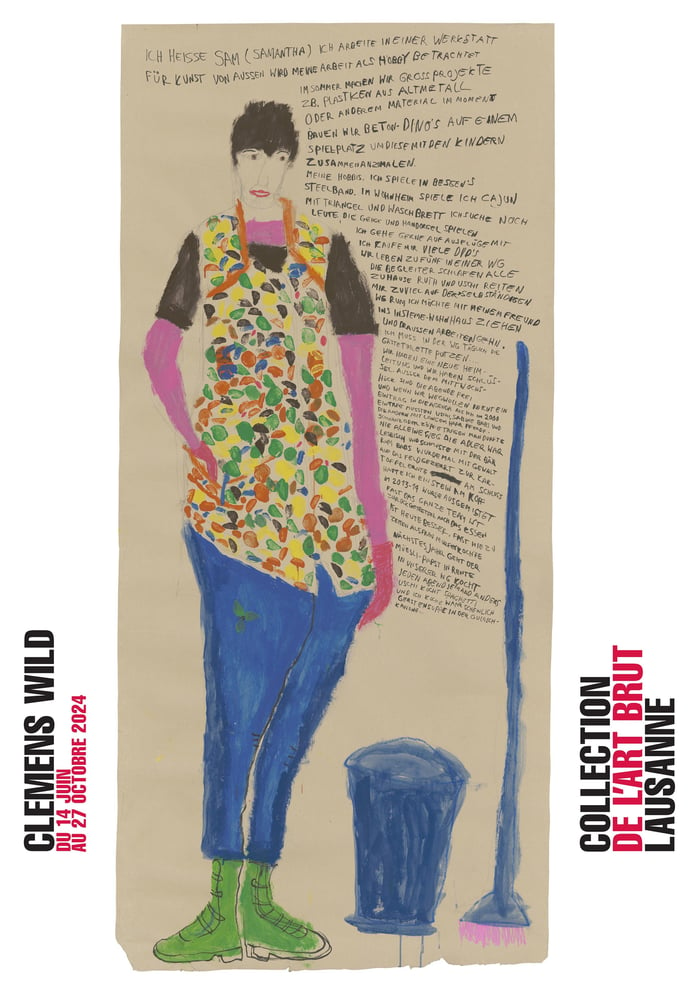Clemens Wild’s paintings feature protagonists with names like Babsi, Sam and Uschi: these figures – with their colourful clothing and hair, smoking cigarettes – form a gallery of women who, despite a life of hardship, stand tall with confidence and dignity. They share the same modest backgrounds, low social status and distant origins. Through these works, they talk about their stories, their struggles, their pastimes, and their hopes for the future.
Wild’s paintings shine a spotlight on people working in undervalued occupations. His works convey the sense of solidarity the artist feels towards these women, having experienced marginalisation himself: Wild has spent the past 42 years living at Humanushaus, an anthroposophical residential and work community near Bern for people with disabilities. After observing women working in the institution’s kitchen, apartments and workshops, he decided to pay tribute to them through his art.
Clemens Wild (b. 1964) was born into a family of booksellers. He has harboured a lifelong passion for drawing and fantasy. The stories he writes and draws are both a source of pleasure and a way of making sense of the world around him. Some women have appeared repeatedly in Wild’s paintings over the past four decades. He depicts them standing still and facing forwards, going about their routine work duties, chatting during their breaks, or waiting at the bus stop. He takes care to give each woman an individual personality: they are dressed not in typical workplace attire, but in distinctive yet practical and functional clothing. No detail escapes his eye, which he has honed over many years spent in the closed-off world of the Humanushaus.
Wild produces paintings in a variety of sizes, using whatever materials he can find: kraft paper, A4 sheets, cardboard-box lids or small paper bags. He also writes texts based in part on personal accounts, in which the women talk about themselves. In addition to bringing the characters to life, these calligraphic writings in black felt pen interact with and complement the image, producing a visually impactful composition. The texts, in the original German and translated into French, have been recorded and made available to the public.
Since 2012, Wild has attended Rohling, a Bern-based artists’ collective. The opportunity to use the studio’s facilities, interact with other artists, participate in exhibitions and go on trips has broadened his horizons, adding complexity to his artistic practice and sharpening his powers of social critique.
In 2024, the Collection de l’Art Brut acquired 12 pieces by Wild. This exhibition, the first large-scale solo show of his works, is accompanied by a documentary produced by Philippe Lespinasse. The exhibition also coincides with the publication of Art Brut Fascicle No. 27.
Curated by Teresa Maranzano, art historian

